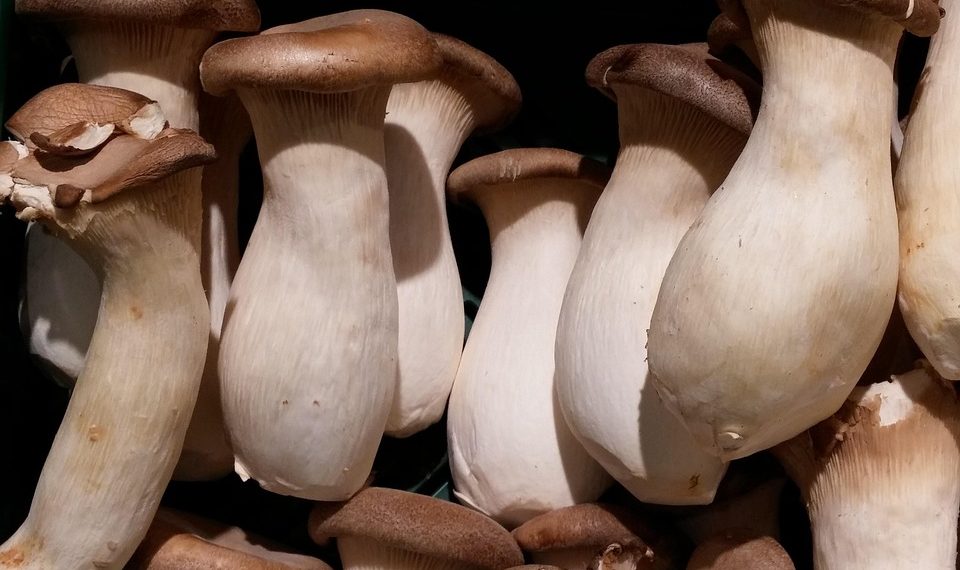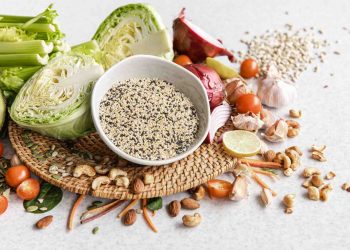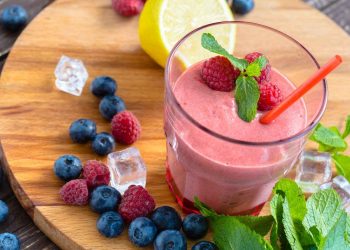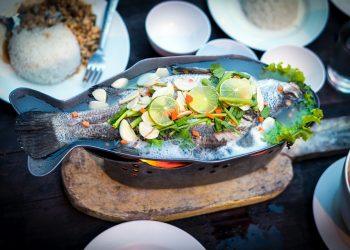Did you know that garlic is often dubbed the “stinking rose”? It’s a term that reflects both its pungent aroma and its rich history in culinary and medicinal traditions. But beyond its unmistakable scent and flavor, garlic holds a treasure trove of health benefits, particularly for heart health. Research has shown that garlic can help lower blood pressure, reduce cholesterol levels, and even improve circulation. So, why not incorporate this powerhouse ingredient into your meals? Here are five delicious garlic-infused recipes that not only tantalize your taste buds but also support your heart health.
Contents
1. Garlic Roasted Broccoli
Ingredients:
- 1 pound of fresh broccoli florets
- 4 cloves of garlic, minced
- 3 tablespoons of olive oil
- Salt and pepper to taste
- Juice of half a lemon
Instructions:
- Preheat your oven to 425°F (220°C).
- In a large bowl, toss the broccoli florets with minced garlic, olive oil, salt, and pepper until well-coated.
- Spread the broccoli on a baking sheet in a single layer.
- Roast for about 20-25 minutes, or until the edges are crispy and the florets are tender.
- Drizzle with lemon juice before serving.
Why It’s Good for Your Heart:
Broccoli is rich in antioxidants and fiber, while garlic can help reduce blood pressure and cholesterol levels. This combination makes it a heart-healthy side dish that’s easy to prepare.
2. Garlic and Herb Quinoa Salad
Ingredients:
- 1 cup quinoa, rinsed
- 2 cups vegetable broth
- 4 cloves garlic, minced
- 1 cup cherry tomatoes, halved
- 1 cucumber, diced
- ¼ cup fresh parsley, chopped
- 3 tablespoons olive oil
- 2 tablespoons balsamic vinegar
- Salt and pepper to taste
Instructions:
- In a saucepan, bring the vegetable broth to a boil. Add the rinsed quinoa, reduce the heat, and simmer for about 15 minutes or until the quinoa is fluffy and the liquid is absorbed.
- In a skillet, heat olive oil over medium heat and sauté the minced garlic for about 2 minutes until fragrant.
- In a large bowl, combine the cooked quinoa, sautéed garlic, cherry tomatoes, cucumber, and parsley.
- Drizzle with balsamic vinegar, and season with salt and pepper. Toss to combine.
Why It’s Good for Your Heart:
Quinoa is a complete protein and packed with fiber. Combined with garlic, this salad supports heart health by promoting healthy cholesterol levels. Plus, it’s a great option for meal prep!
3. Garlic Lemon Chicken
Ingredients:
- 4 chicken breasts
- 6 cloves of garlic, minced
- Juice of 2 lemons
- 2 tablespoons olive oil
- 1 teaspoon dried oregano
- Salt and pepper to taste
Instructions:
- In a bowl, mix the minced garlic, lemon juice, olive oil, oregano, salt, and pepper.
- Place the chicken breasts in a zip-top bag, pour the marinade over, seal, and refrigerate for at least 30 minutes (or overnight for more flavor).
- Preheat the grill to medium-high heat. Grill the chicken for about 6-7 minutes on each side or until cooked through.
- Serve with a side of steamed vegetables or a fresh salad.
Why It’s Good for Your Heart:
Chicken is a lean protein source, and when paired with garlic and lemon, it not only adds flavor but also helps in reducing inflammation and cholesterol levels.
4. Garlic-Infused Olive Oil
Ingredients:
- 1 cup extra virgin olive oil
- 10 cloves of garlic, peeled and crushed
- Fresh herbs (optional, such as rosemary or thyme)
Instructions:
- In a small saucepan, combine the olive oil and crushed garlic.
- Heat over low heat for about 15-20 minutes, ensuring the garlic doesn’t brown.
- Strain the oil into a clean bottle or jar, adding fresh herbs if desired. Allow it to cool before sealing.
Why It’s Good for Your Heart:
Garlic-infused olive oil is a flavorful addition to salads, pasta, or as a dipping oil. Olive oil is rich in monounsaturated fats, which are known to support heart health, while garlic adds its own heart-healthy benefits.
5. Spaghetti Aglio e Olio
Ingredients:
- 12 ounces spaghetti
- 6 cloves garlic, thinly sliced
- ½ cup extra virgin olive oil
- 1 teaspoon red pepper flakes (adjust to taste)
- Salt to taste
- Fresh parsley, chopped for garnish
- Grated Parmesan cheese (optional)
Instructions:
- Cook the spaghetti according to package instructions until al dente. Reserve about 1 cup of pasta water, then drain.
- In a large skillet, heat olive oil over medium heat. Add the sliced garlic and red pepper flakes, cooking until the garlic is golden but not burnt.
- Add the drained spaghetti to the skillet, tossing to coat in the garlic oil. If it seems dry, add a bit of the reserved pasta water until you reach your desired consistency.
- Season with salt, garnish with parsley, and top with Parmesan if desired.
Why It’s Good for Your Heart:
This classic Italian dish is simple yet flavorful. The combination of garlic and olive oil provides healthy fats and antioxidants, making it a heart-healthy meal.
The Heart-Health Benefits of Garlic
Garlic is more than just a flavor enhancer; it’s a superfood with numerous benefits for cardiovascular health. According to a study published in the Journal of Nutrition, garlic consumption is associated with lower blood pressure and improved cholesterol profiles (Ried et al., 2016). Moreover, garlic contains allicin, a compound known for its anti-inflammatory and antioxidant properties.
Garlic also has the potential to improve blood circulation, which can help reduce the risk of heart disease. So, whether you’re sautéing, roasting, or infusing, incorporating garlic into your meals can be a delicious way to support your heart health.
FAQs
1. How much garlic should I eat for heart health?
Most studies suggest that consuming 1-2 cloves of garlic per day can be beneficial. However, it’s always best to consult with a healthcare provider for personalized advice.
2. Can garlic supplements provide the same benefits?
While garlic supplements can offer some benefits, whole garlic is generally more effective due to the presence of other beneficial compounds and nutrients.
3. Are there any side effects of consuming too much garlic?
Excessive garlic can lead to digestive issues, bad breath, and body odor. It can also interact with certain medications, so moderation is key.
4. Is it better to eat garlic raw or cooked?
Both raw and cooked garlic have health benefits. Raw garlic contains more allicin, while cooking can enhance its flavor and make it easier to digest.
Conclusion
Incorporating garlic into your diet can be a flavorful and healthful way to support heart health. From roasted vegetables to classic pasta dishes, the possibilities are endless. Not only does garlic add a delicious punch to your meals, but it also packs a powerful punch for your cardiovascular system.
So, the next time you’re whipping up a meal, don’t shy away from that garlic bulb. Embrace it! Your heart will thank you.
Disclaimer: This article is for educational purposes only and is not a substitute for professional medical advice. Always consult a qualified healthcare provider before making changes to your health routine.
References
-
Ried, K., Toben, C., & Fakler, P. (2016). Effect of garlic on blood pressure: A systematic review and meta-analysis. Journal of Nutrition, 146(4), 844-853. https://doi.org/10.3945/jn.115.225029
-
Mayo Clinic. (2021). Garlic: Health benefits, nutrition, and more. Retrieved from https://www.mayoclinic.org/healthy-lifestyle/nutrition-and-healthy-eating/in-depth/garlic/art-20046015
-
National Institutes of Health. (2021). Garlic: Overview. Retrieved from https://ods.od.nih.gov/factsheets/Garlic-HealthProfessional/
Get Your FREE Natural Health Guide!
Subscribe now and receive our exclusive ebook packed with natural health tips, practical wellness advice, and easy lifestyle changes — delivered straight to your inbox.














